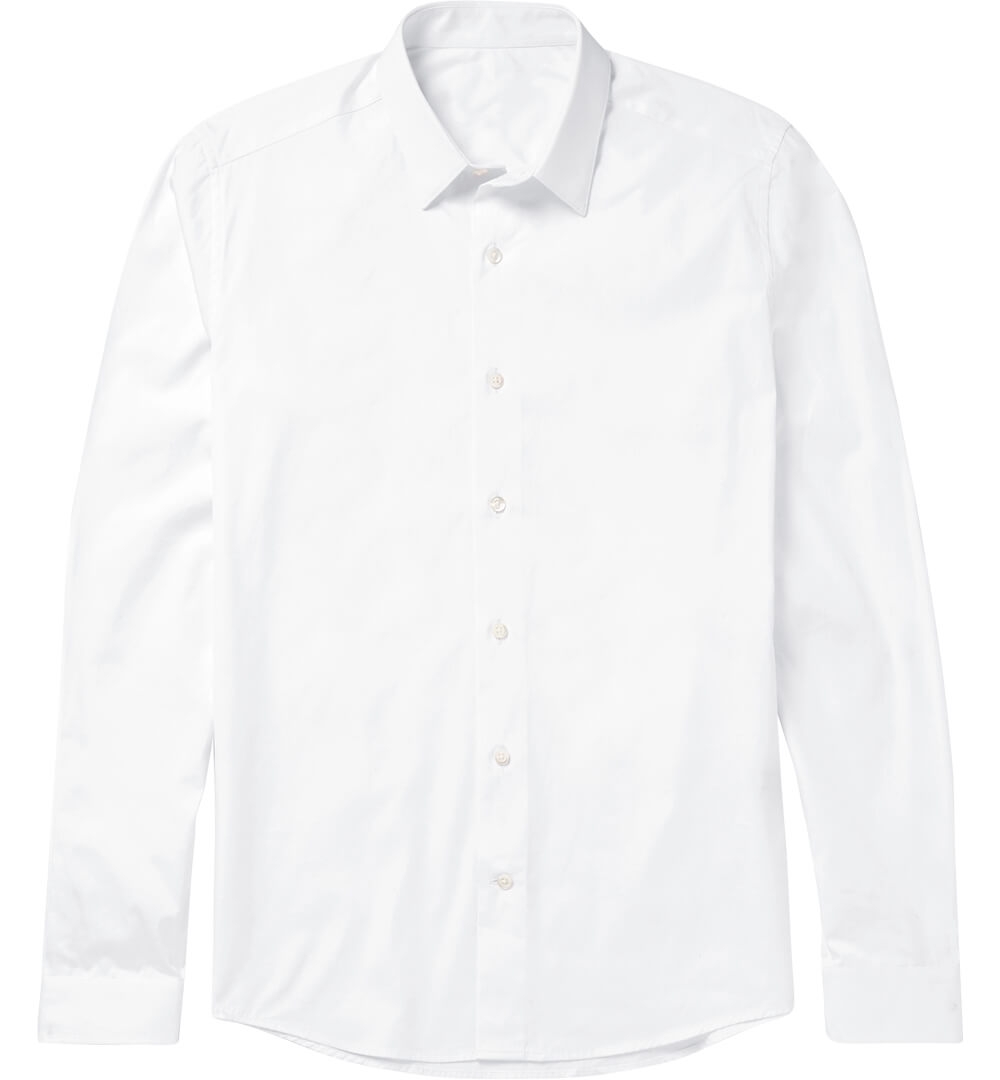When buying a ready-to-wear shirt, there's often too little information to choose your size. As Swann specializes in made-to-measure shirts, this problem doesn't arise with us, as we create the shirt entirely to your measurements. We're experts in the field, but we're also experienced enough to help you choose the right size for your shirt.
In ready-to-wear, a shirt has only one or two size indications at most. When you look up the size of a shirt, you'll at least find the size that corresponds to the neck circumference (in cm, from 37 to 46 for adult sizes, or in inches, from 14.5 to 18). Some manufacturers will also indicate a sleeve length: one standard (e.g. 64 cm) and one extra-long (68 cm), as well as the cut style (regular vs. slim). But in the best case, it's always best to try the shirt on for size. In case you're ordering online, there's often a shirt-size chart that will provide more detailed information on shirt measurements. Depending on the brand, there may be equivalences, notably between neck size, which may be expressed in centimeters or inches.

There are many terms used to describe the cut of a shirt. It is also important to differentiate between the cut of a shirt and its size. When we talk about a slim-fit shirt, we notice that when the shirt is laid flat, it has a waist that is narrower than the chest or the pelvis (the bottom of the shirt). This is the shape that defines a slim fit shirt (extra slim in the most fitted cases) or a fitted shirt. There is no generic term and it depends on each brand. On the other hand, a regular-fit or straight-cut shirt will have a less tight waist. Generally, the waist will be as wide as the pelvis, which is why it is called a straight cut. This is preferable for people who need comfort or for those who want a looser cut, in the case of a weekend shirt, for example.

Order shirts to your measurements, save your pattern and put an end to tedious shopping sessions...
See our shirts